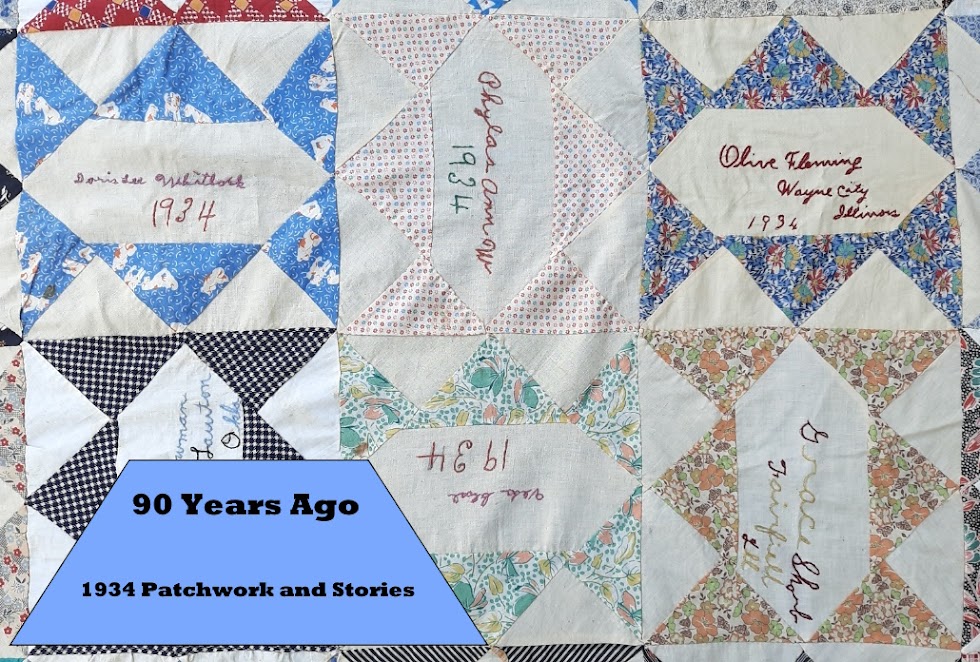Not all women in the 1930s were stay at home housewives. The Malaga quilt makers were teachers, bookkeepers, fruit packers, factory workers, a milliner and farmers.
 |
| Nina Elliott ~ Dresden Plate |
Nina May Elliott was a school teacher when she made her Dresden Plate quilt block. Nina was single of course - married women didn't teach school. Nina had a three year college degree, probably from a teachers' college. Teaching and nursing were two areas in which women were encouraged to participate. Nina taught at a number of schools and shared a house with another female teacher.
Nina's mother Mildred Love Elliott was also a teacher. Mildred's mother and stepfather took the family to stake a homestead claim in Del Rio, Washington. In the 1900 census Mildred was 18 years old and teaching, most likely in a one room school. No tertiary qualifications were needed for Mildred, she would have gone straight into a teaching job after finishing school - some of her students would be almost as old as she was. The school opened one term at a time when the parents could afford the teacher's salary. Miss Love might have boarded with a school family or may have had her own teacher's residence.
 |
|
School teacher’s cabin in
Marlboro, Alberta, Canada, 1930.
Photo legacy of Helen A.
Dineen, Wikimedia Commons
|
Nina Elliott left the teaching profession at the age of 28 to marry Merton Love, her mother Mildred's cousin. Merton was a hardware salesman, twenty years Nina's senior and had been widowed for five years. Nina became stepmother to Merton's two teenage children and had two more children of her own. Nina didn't enjoy good health and died in 1953 at the age of 41.
Mildred Elliott survived her daughter Nina. Mildred resumed teaching while here children were at high school. Mildred must have returned to study; in the 1940 census she has completer five years of tertiary education - perhaps she had her master's degree in education? Mildred outlived her daughter Nina by 28 years and survived to celebrate her 100th birthday.
Postscript: Most of the women from the Malaga quilt were born in the USA but their parents were immigrants. Nina Elliott is an exception, at least on her mother's side of the family. Nina's g-g-g-g-grandfather Robert Love enlisted with the Rhode Island troops as a sergeant in 1777.










